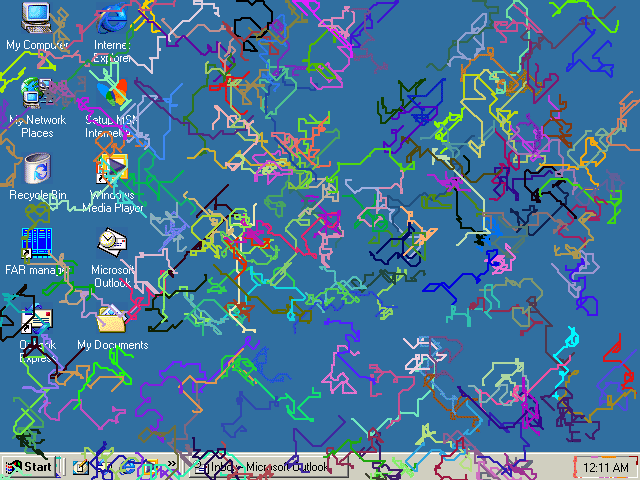Parent class: VirWare
Viruses and worms are malicious programs that self-replicate on computers or via computer networks without the user being aware; each subsequent copy of such malicious programs is also able to self-replicate. Malicious programs which spread via networks or infect remote machines when commanded to do so by the “owner” (e.g. Backdoors) or programs that create multiple copies that are unable to self-replicate are not part of the Viruses and Worms subclass. The main characteristic used to determine whether or not a program is classified as a separate behaviour within the Viruses and Worms subclass is how the program propagates (i.e. how the malicious program spreads copies of itself via local or network resources.) Most known worms are spread as files sent as email attachments, via a link to a web or FTP resource, via a link sent in an ICQ or IRC message, via P2P file sharing networks etc. Some worms spread as network packets; these directly penetrate the computer memory, and the worm code is then activated. Worms use the following techniques to penetrate remote computers and launch copies of themselves: social engineering (for example, an email message suggesting the user opens an attached file), exploiting network configuration errors (such as copying to a fully accessible disk), and exploiting loopholes in operating system and application security. Viruses can be divided in accordance with the method used to infect a computer:- file viruses
- boot sector viruses
- macro viruses
- script viruses
Class: Email-Worm
Email-Worms spread via email. The worm sends a copy of itself as an attachment to an email message or a link to its file on a network resource (e.g. a URL to an infected file on a compromised website or a hacker-owned website). In the first case, the worm code activates when the infected attachment is opened (launched). In the second case, the code is activated when the link to the infected file is opened. In both case, the result is the same: the worm code is activated. Email-Worms use a range of methods to send infected emails. The most common are: using a direct connection to a SMTP server using the email directory built into the worm’s code using MS Outlook services using Windows MAPI functions. Email-Worms use a number of different sources to find email addresses to which infected emails will be sent: the address book in MS Outlook a WAB address database .txt files stored on the hard drive: the worm can identify which strings in text files are email addresses emails in the inbox (some Email-Worms even “reply” to emails found in the inbox) Many Email-Worms use more than one of the sources listed above. There are also other sources of email addresses, such as address books associated with web-based email services.Read more
Platform: Win32
Win32 is an API on Windows NT-based operating systems (Windows XP, Windows 7, etc.) that supports execution of 32-bit applications. One of the most widespread programming platforms in the world.Description
Technical Details
Cervivec is an Internet worm virus spreading via the Internet as an email attachment.
The worm itself is a Windows PE EXE file about 230Kb in size, written in Delphi. It is compressed by UPX - the decompressed size is about 670Kb.
The infected messages have Subject/Body content randomly selected from different variants in different languages:
Vtip
Cau posilam ti cerviky tak se na to podivej (virus to neni)Vtip
Cau posielam ti cerviky tak sa na to pozri (virus to neni)Witz
Hallo, Ich habe ein guter Witz-Wurm so sieh! (kein virus)blague
J'ai une bonne blague ca s'appelle verre de terre alors jette un coup d'oeil (il n'y a pas de virus)���?
?��??�, ' ?-� ?��� ?��?R'�- � ����? ?�R?? �?�?�? (��R -? ?����)Joke
Hi, I have some cool joke - worms so have a look at it (no virus)Zart
Czesc, mam swietnz dowcip - robaka. Obejrzyj go sobie (to nie jest wirus)Chiste
Hola te mando los gusanilloes. Pues mirarlos (no es un virus)
The worm activates from infected email only if a user clicks on the attached file. The worm then installs itself into the system, runs its spreading and 'effect' routines (colored "worms" eating the desktop).

While installing itself the worm copies itself to the Windows directory and to the SYSTEM32 subdirectory with the name "ntkrnl.exe". It then registers that file in the system registry auto-run key:
HKLMSoftwareMicrosoftWindowsCurrentVersionRun
Kernel Loader = %WindowsDir%system32ntkrnl.exe -LOADDRIVERS=TRUE
Read more
Find out the statistics of the vulnerabilities spreading in your region on statistics.securelist.com